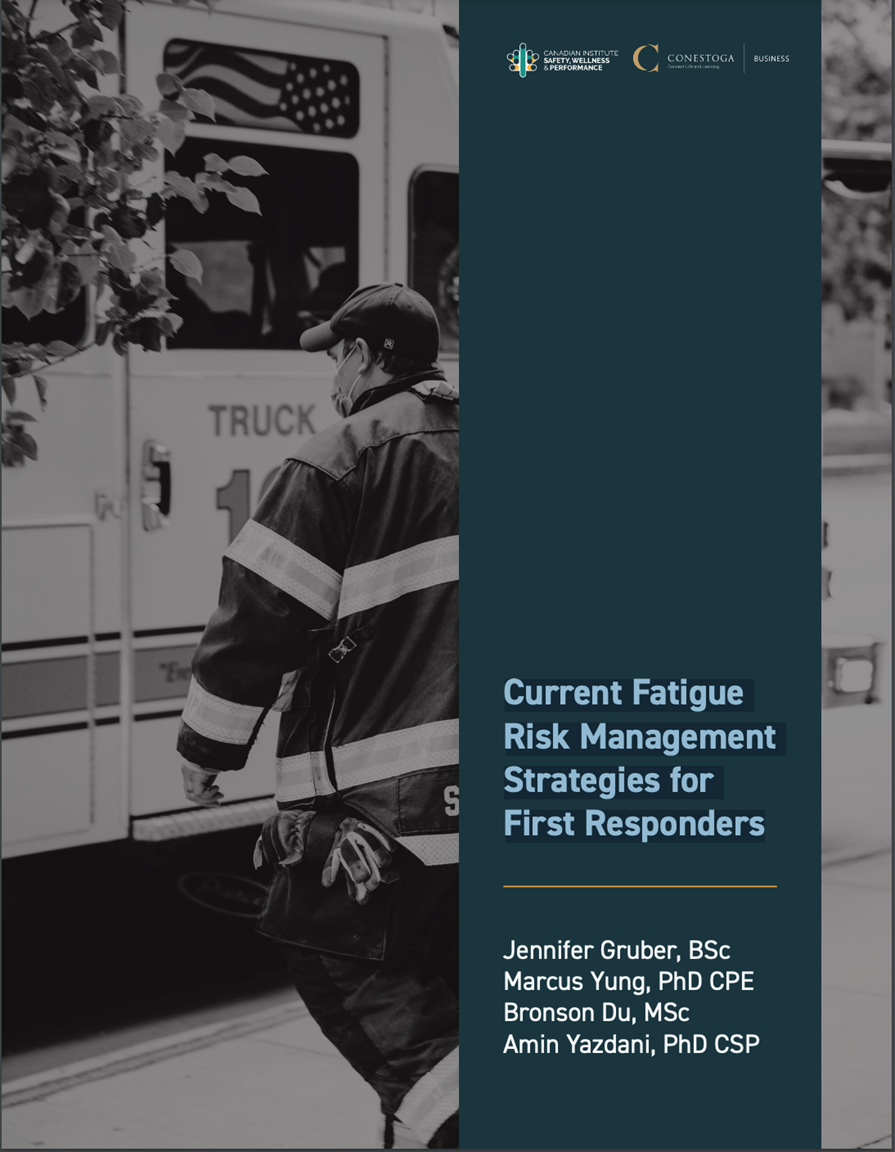Current Fatigue Risk Management Strategies for First Responders

Objective for CSSP-2018-CP-2366
Our objective is to develop a consensus-based, evidence-informed national Standard on First Responder Workplace Fatigue Risk Management that will provide an approach to systematically prevent and manage workplace fatigue by addressing it in a strategic, coordinated approach, and as part of a broad organizational management framework.
How this milestone supports the objective for CSSP-2018-CP-2366
This milestone will contribute to the development of a Seeds Document that will be used to develop a national Standard, in accordance with CSA Groups’ accredited standards development process. This report describes the “Research and Synthesis of Evidence” phase, based on the current practices on first responder workplace fatigue risk management. The objective of this study was to broadly identify current practices pertaining to fatigue risk management for first responder professional groups to inform aspects of the risk management model known as the RACE model (recognize hazards, assess risks, implement controls, and evaluate effectiveness of controls) that will be integrated into a broader management system framework using Plan-Do-Check-Act (PDCA). In addition, this study will identify gaps in existing resources to address first responder fatigue risk management.
Background
First responders are at high risk of suffering from decrements in neurocognitive and physical performance related to fatigue. Such performance decrements endanger not only the personal health and safety of these responders but also the health and safety of the public they serve. Fatigue may also be a precursor to adverse longer-term outcomes. Appropriate management, policymaking, standards, guidance, and research activities can reduce the exposure to these fatigue-related risks and hazards before they pose significant problems during emergency response operations.
Methods
This study aims to examine the accessible content to inform the extent, range, recommendations, and value of available and/or recommended fatigue risk management policies, practices, and procedures for first responder fatigue risk management. Data extraction was completed by conducting both a general online search for key words such as ‘fatigue risk management’ and ‘first responders’ (including each of the key groups: ‘paramedic/EMS’, ‘firefighters’ and ‘police’), and searching key components within the risk management RACE model and other organizational elements. The results of this search were re-organized into a broader management system PDCA framework.
General Findings
From a general Google search using a priori determined keywords and from 86 identified provincial and national first responder associations, compensation boards, health and safety associations, and government websites, we extracted data from 17 publicly available resources (reports, guidelines, standards) documenting procedures, practices, and programs addressing prevention and management of fatigue. There was no single resource currently in practice that comprehensively addressed all elements of a fatigue risk management system for first responders; we found resources addressing individual elements of the PDCA model, particularly Plan and Do elements. Identified Plan activities include work/organizational policies, communication strategies and culture change, fatigue awareness training, monitoring and assessment tools (surveys and a unit hour utilization calculator), and incident reporting strategies. A fatigue cost calculator has been used to calculate the financial burden of fatigue to identify and justify the need for fatigue intervention. Do elements were primarily administrative risk mitigation controls such as work hour restrictions/shift work specifications, organizational recovery time policies, sleep hygiene guidelines, workplace wellness programs, and physical capacity or pre-emptive testing or training. There were general recommendations pertaining to Check and Act elements, including using fatigue calculators (unit hour utilization and fatigue cost) to evaluate the effectiveness of a fatigue control or intervention, and a general recommendation for corrective actions and continuous improvements.
Conclusion
Our review of current programs and practices suggest that there is no comprehensive fatigue risk management system in practice for first responders but there are resources informing the elements of a systematic approach to fatigue risk management. Also, there was very little indication of how fatigue was conceptualized, despite the multifaceted nature of fatigue. A systematic approach to fatigue risk management, addressing all elements of the broad management system PDCA framework remains elusive and desirable.

